
At Ankercloud, we focus on healthcare needs. Our advanced cloud services are tailored for healthcare providers, optimizing operations, enhancing patient care, and fostering innovation.
Our Solutions
At Ankercloud, we understand that every healthcare organization is different. That's why we offer a range of customizable solutions to suit your specific requirements:
Check out our blog
Mastering Compliance: A Quick Path to SOC 2, ISO 27001, and More with Ankercloud
In an increasingly interconnected world, compliance with stringent industry standards and regulations is no longer a choice but a necessity. Organizations managing sensitive data and information must adhere to comprehensive frameworks like SOC 2, ISO 27001, and more to ensure data security and operational integrity. Ankercloud stands as the ultimate solution, offering an efficient pathway to compliance and enhancing your overall security posture.
The Compliance Conundrum
As businesses expand and technology evolves, safeguarding data, maintaining operational integrity, and fostering trust become paramount. Achieving compliance with standards such as SOC 2, ISO 27001, and other relevant frameworks can be a formidable challenge. It demands meticulous documentation, rigorous audits, and ongoing commitment.
Ankercloud's Streamlined Approach
Ankercloud revolutionizes the path to compliance by providing a streamlined approach that accelerates your journey.
1. Expert Guidance
Ankercloud's seasoned professionals collaborate closely with your organization to develop a tailored compliance strategy.
2. Simplified Documentation
Compliance involves an extensive paper trail. Ankercloud simplifies this process with document templates and guidance.
3. Automation Tools
Ankercloud offers a suite of automation tools that simplify compliance management, spanning access controls, data encryption, and more.
Achieving SOC 2 Compliance
SOC 2 compliance revolves around controls related to security, availability, processing integrity, confidentiality, and privacy. Ankercloud streamlines the process, ensuring your organization meets these stringent requirements.
ISO 27001: Building a Secure Information Management System
ISO 27001 stands as a globally recognized standard for information security management systems. Ankercloud expertly guides your organization through this intricate process, covering risk management, security policies, and continuous improvement.
Other Frameworks
Ankercloud's expertise extends to a spectrum of compliance frameworks, including HIPAA, GDPR, and NIST. The unified approach ensures your organization is prepared for an array of compliance requirements.
The Benefits of Streamlined Compliance
Mastering compliance with Ankercloud bestows multiple advantages upon your organization:
- Fortified Data Security
Compliance frameworks inherently enhance data security practices, safeguarding your information.
- Customer Confidence
Meeting compliance standards signifies your dedication to protecting customer data, fostering trust.
- Competitive Edge
Compliance can serve as a competitive differentiator, opening doors to new opportunities.
- Risk Mitigation
A compliant organization is better equipped to manage risks and respond to incidents promptly.
The road to mastering compliance, particularly frameworks like SOC 2, ISO 27001, and more, is no longer a burdensome one. Ankercloud's streamlined approach simplifies the journey, ensuring your organization meets the highest standards while upholding data security and operational integrity. Do not let compliance complexities impede your progress. Embrace the future with Ankercloud and secure your position in today's fiercely competitive business landscape.
Setup of Custom CloudWatch Metrics on your Linux EC2 instance
Amazon CloudWatch can load all the metrics in your account (both AWS resource metrics and application metrics that you provide) for search, graphing, and alarms. Metric data is kept for 15 months, enabling you to view both up-to-the-minute data and historical data.
The CloudWatch monitoring provide some basic monitoring which can be configures in some clicks, while if you want to monitor custom metrics such as the disk and memory utilization of your EC2 machine you should have to follow these steps.
Steps to configure CloudWatch Metrics on Linux Machine:
- Go to AWS Console-> Go To IAM -> Go to Role-> create Role-> Attach CloudWatchAgentServerPolicy -> click next-> Give Role Name-> click create role
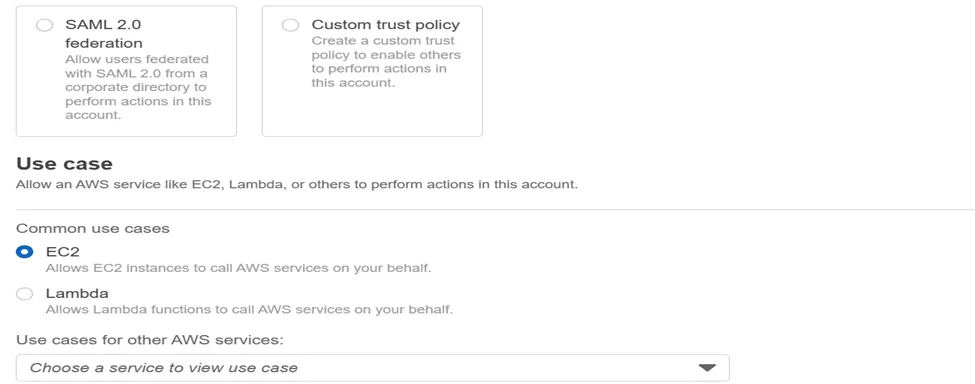
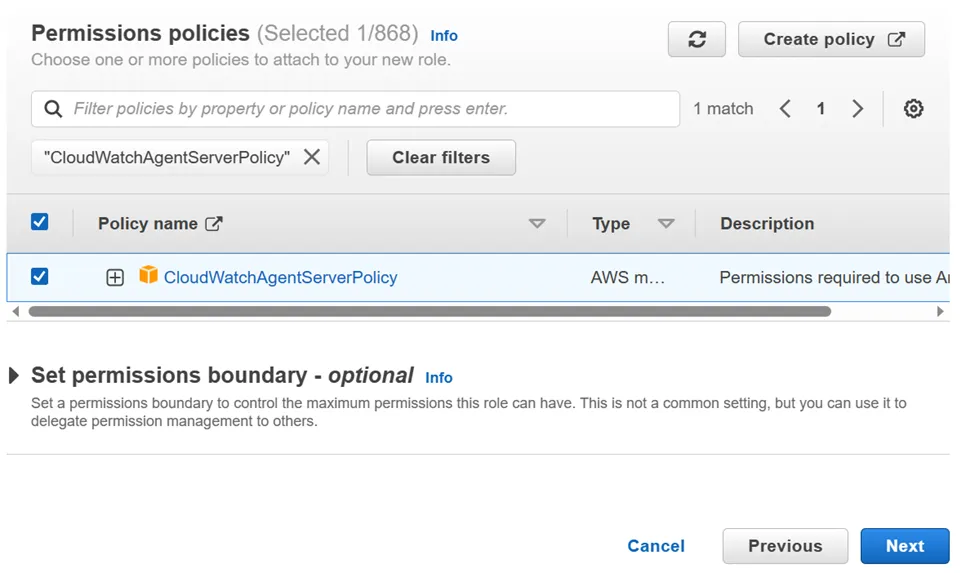
2. Attach created role to the EC2 instance on which you want to do configuration of CloudWatch Metrics.
Go to EC2-> Go to Security-> Go to Modify IAM Role-> Select the Role Name-> click on update IAM Role
3. SSH into Your EC2 instance and apply following Commands
i. wget https://s3.amazonaws.com/amazoncloudwatch-agent/ubuntu/amd64/latest/amazon-cloudwatch-agent.deb
The command will download CloudWatch Agent on your EC2 machine.

iI. sudo dpkg -i -E ./amazon-cloudwatch-agent.deb
The Command will unzip the installed package
iiI. sudo /opt/aws/amazon-cloudwatch-agent/bin/amazon-cloudwatch-agent-config-wizard
The Command start installation of CloudWatch Agent
iv. sudo /opt/aws/amazon-cloudwatch-agent/bin/amazon-cloudwatch-agent-ctl -a fetch-config -m ec2 -c file:/opt/aws/amazon-cloudwatch-agent/bin/config.json -s
The Command will run the AWS CloudWatch Agent
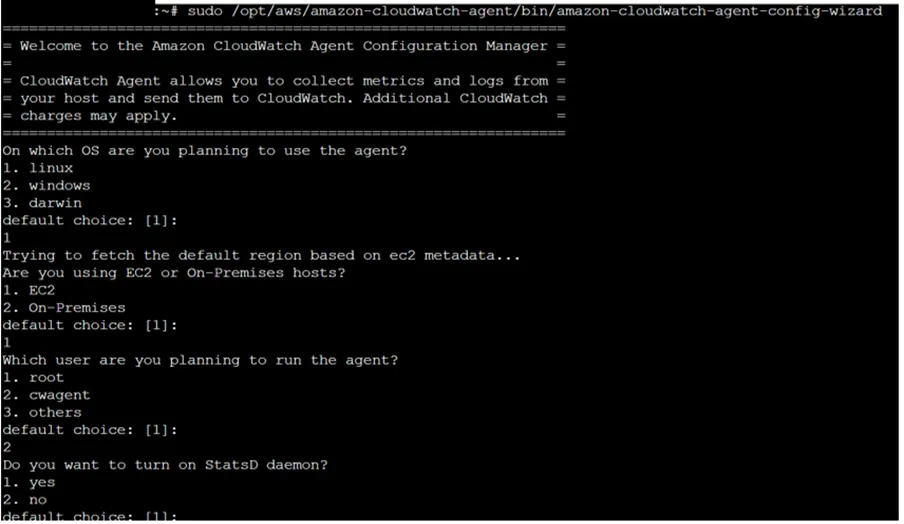

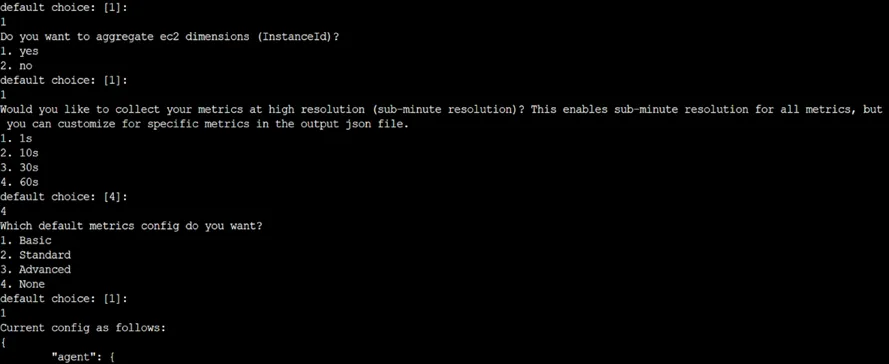

v. sudo /opt/aws/amazon-cloudwatch-agent/bin/amazon-cloudwatch-agent-ctl -a status
The Command Will start the AWS CloudWatch Configuration as per selected Settings.
4. Now monitor the instance from CloudWatch Console.
5. Go to the cloudwatch dashboard->click on all Metrics-> click on cwagent-> click on InstanceId
6. Select Metrics which utilization you want to check
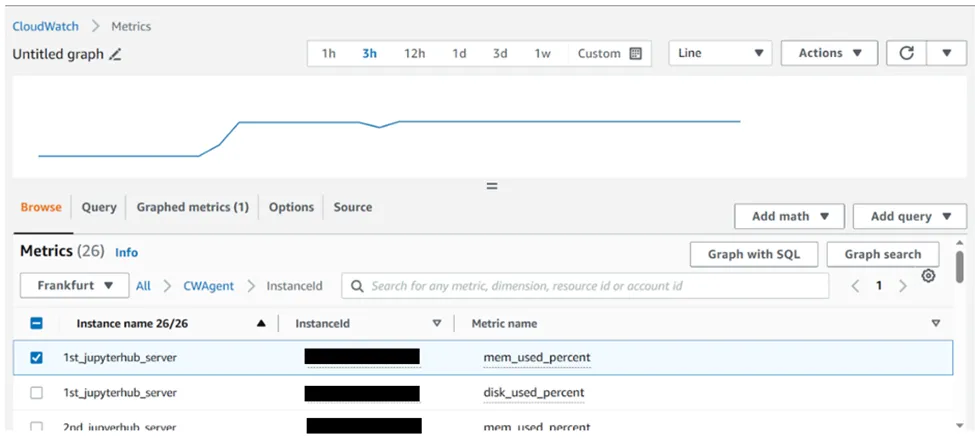
7. This is how you can check the memory, disk and CPU utilization of your EC2 instance.
Cloud Compliance and Data Protection Services: Ensuring a Secure Cloud Environment with Ankercloud
In a data-centric world, the protection of sensitive information and adherence to regulatory requirements have grown into crucial priorities for businesses, regardless of their scale. Recent years have seen a notable surge in cybersecurity threats, coupled with the introduction of multiple legislations aimed at safeguarding data and privacy. These regulations, such as GDPR, HIPAA, ISO/IEC 27001, and PCI DSS, place rigorous expectations on how data is handled and secured within organizations. Non-compliance with these regulations can result in substantial financial penalties, legal consequences, and harm to an organization's standing.
In this article, we will delve into the evolving landscape of data protection and regulatory compliance, exploring the essential measures and strategies that businesses must adopt to navigate this complex terrain successfully.
The Importance of Cloud Compliance and Data Protection
As the volume of data processed and stored in the cloud continues to soar, the need for robust data protection and compliance measures becomes more critical than ever. Various factors underscore the significance of this:
1. Data Privacy Regulations
Laws such as the General Data Protection Regulation (GDPR) and the California Consumer Privacy Act (CCPA) impose strict requirements on the handling of personal and sensitive data. Non-compliance can result in hefty fines.
2. Cybersecurity Threats
The digital realm is rife with threats, from data breaches to ransomware attacks. Effective data protection is a fundamental defense against these risks.
3. Customer Trust
Building trust with your clients is paramount. Demonstrating that their data is secure and compliant with relevant regulations is a significant factor in gaining and maintaining their trust.
4. Business Continuity
Data loss or breaches can have devastating consequences for your business, including operational disruptions, financial losses, and damage to your reputation. Proper data protection and backup strategies are essential for business continuity.
Cloud Compliance and Data Protection with Ankercloud
While AWS goes to great lengths to ensure compliance with industry standards and legal requirements, it's crucial for customers to implement preventive measures and maintain the confidentiality, availability, and integrity of their data. Ankercloud, an AWS advanced partner, offers guidance and technical support to help businesses achieve and maintain compliance.
Our Comprehensive Services Include
1. Security Strategy Analysis
We begin by analyzing your existing cloud environment, helping you identify areas where improvements are needed. This analysis sets the stage for creating a tailored security strategy that aligns with your unique requirements.
2. Centralized Policies for User Control
We assist you in developing centralized policies that give you full control over your users' actions. This ensures that your cloud environment operates in compliance with the strictest security standards.
3. IAM User Management
Our experts provide the necessary tools and guidance for efficient Identity and Access Management (IAM) user management. This critical component ensures that access is restricted to authorized individuals only.
4. Defensive Controls
We help you implement robust defensive controls to protect your AWS infrastructure. From firewalls to intrusion detection systems, our team ensures that your cloud environment is well-protected against external threats.
5. In-Depth Infrastructure Reviews
Our team conducts thorough reviews of your AWS infrastructure to identify vulnerabilities and areas for improvement. We leave no stone unturned in the quest for cloud security.
6. Cloud Workload Design and Maintenance
Designing and maintaining new cloud workloads in line with best practices is one of our key strengths. We ensure that your cloud architecture is not only secure but also optimized for performance.
7. Ongoing Support
Cloud compliance is not a one-time task but an ongoing commitment. We provide continuous support for secure infrastructure management, monitoring, and uptime, ensuring that your cloud environment remains resilient.
In the world of cloud computing, waiting to address security concerns after an incident occurs can be highly ineffective and lead to irreversible losses. The consequences could include data breaches, service downtime, financial losses, and customer dissatisfaction. Ankercloud emphasizes the importance of taking proactive steps to ensure that your AWS environment is secure, compliant, and resilient.
So, if you want to ensure that your cloud infrastructure is secure, compliant, and ready to face any challenge, don't wait—take action now with Ankercloud. Our expertise, combined with the robust security features of AWS, is your recipe for success in the ever-evolving cloud landscape.
Ankercloud: Partners with AWS, GCP, and Azure
We excel through partnerships with industry giants like AWS, GCP, and Azure, offering innovative solutions backed by leading cloud technologies.



The Ankercloud Team loves to listen















.png)






.jpg)